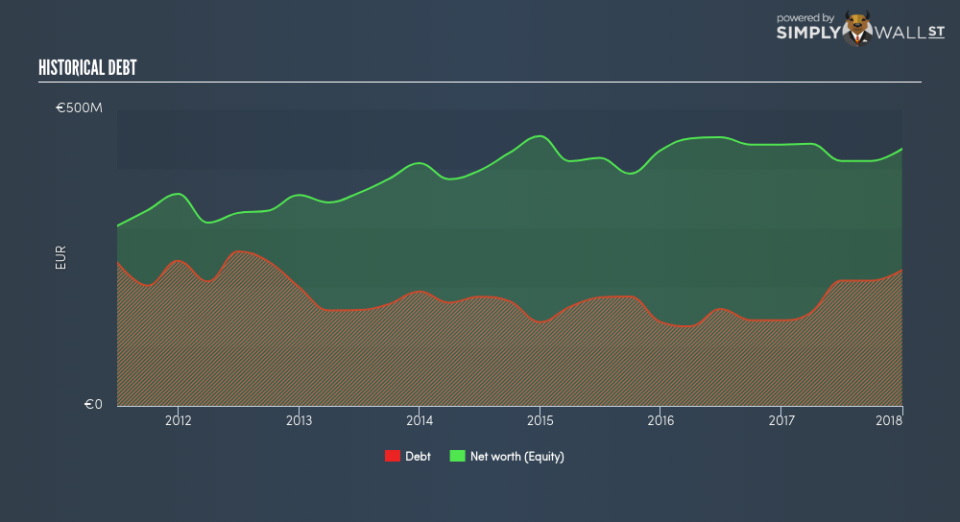What does Diebold Nixdorf AG’s (ETR:WIN) Balance Sheet Tell Us About Its Future?

Small-caps and large-caps are wildly popular among investors, however, mid-cap stocks, such as Diebold Nixdorf AG (ETR:WIN), with a market capitalization of €1.74b, rarely draw their attention from the investing community. However, history shows that overlooked mid-cap companies have performed better on a risk-adjusted manner than the smaller and larger segment of the market. WIN’s financial liquidity and debt position will be analysed in this article, to get an idea of whether the company can fund opportunities for strategic growth and maintain strength through economic downturns. Note that this information is centred entirely on financial health and is a top-level understanding, so I encourage you to look further into WIN here. See our latest analysis for Diebold Nixdorf
Does WIN produce enough cash relative to debt?
WIN’s debt levels surged from €144.31m to €228.69m over the last 12 months , which is made up of current and long term debt. With this rise in debt, WIN’s cash and short-term investments stands at €120.68m for investing into the business. Moreover, WIN has generated €292.18m in operating cash flow in the last twelve months, resulting in an operating cash to total debt ratio of 127.77%, indicating that WIN’s operating cash is sufficient to cover its debt. This ratio can also be interpreted as a measure of efficiency as an alternative to return on assets. In WIN’s case, it is able to generate 1.28x cash from its debt capital.
Can WIN pay its short-term liabilities?
Looking at WIN’s most recent €1.01b liabilities, it appears that the company has not been able to meet these commitments with a current assets level of €955.66m, leading to a 0.95x current account ratio. which is under the appropriate industry ratio of 3x.
Can WIN service its debt comfortably?
With debt reaching 52.77% of equity, WIN may be thought of as relatively highly levered. This is not unusual for mid-caps as debt tends to be a cheaper and faster source of funding for some businesses.
Next Steps:
WIN’s high cash coverage means that, although its debt levels are high, the company is able to utilise its borrowings efficiently in order to generate cash flow. Though its lack of liquidity raises questions over current asset management practices for the mid-cap. This is only a rough assessment of financial health, and I’m sure WIN has company-specific issues impacting its capital structure decisions. I suggest you continue to research Diebold Nixdorf to get a more holistic view of the stock by looking at:
Future Outlook: What are well-informed industry analysts predicting for WIN’s future growth? Take a look at our free research report of analyst consensus for WIN’s outlook.
Valuation: What is WIN worth today? Is the stock undervalued, even when its growth outlook is factored into its intrinsic value? The intrinsic value infographic in our free research report helps visualize whether WIN is currently mispriced by the market.
Other High-Performing Stocks: Are there other stocks that provide better prospects with proven track records? Explore our free list of these great stocks here.
To help readers see pass the short term volatility of the financial market, we aim to bring you a long-term focused research analysis purely driven by fundamental data. Note that our analysis does not factor in the latest price sensitive company announcements.
The author is an independent contributor and at the time of publication had no position in the stocks mentioned.


